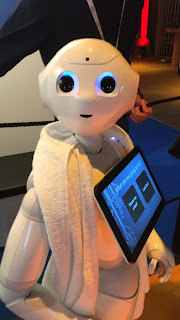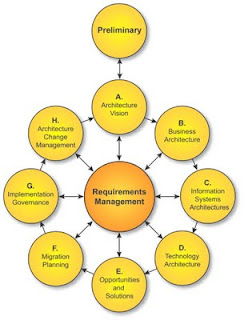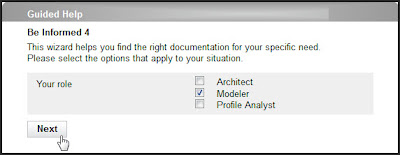First steps towards an effective article on Robotics
As mentioned in my previous article, writing is a structured, goal-driven activity. In order to get to an effective article, we need to make explicit choices:
These choices help us in making the first sketch of our article. They will also influence our writing style, the level of detail and use of technical terminology.
For my new article on Robotics, I want to leave the paved roads and convince my readers there are more and better reasons to choose for Robotics then just FTE reduction. This is also perfectly alligned with the my employer's branding at the World Summit AI, where Accenture stated it focusses on the "use of AI to support society" and with my own goal, which is establishing myself as the expert in business process innovation.
Main reason for me to put an article on LinkedIn is to generate new opportunities. So for this new article, I have selected the following main goals:
In general I would of course also like readers to share my article, but these two goals are my main objectives.
There has been some discussions on the impact of Robotics at clients. Some leaders find it hard to look into Robotics because they want to avoid having hard conversations with their team on FTE reductions. From a commercial point of view, it is also good to focus on the more motivating elements of Robotics, as it opens up new opportunities.
I have been looking at Simon Sinek's definition of 'Great leaders'. He describes a great leader as someone that is trusted by his or her people and cares for these people as if they are family. This might help me in positioning Robotics as the tool for great leaders. And who doesn't want to be a great and inspiring leader?
Now that I have set the goal for my article, defined the audience and looked at the context, I can proceed to building up the structure of the article and then start writing. You can follow my progress in my next article.
- What is the goal of the article, what do we want to achieve?
- What is the target audience of the article?
- What is the context of our article?
These choices help us in making the first sketch of our article. They will also influence our writing style, the level of detail and use of technical terminology.
Setting the goal
Those of you that have followed my articles on Personal Branding know that I consider any form of professional communication as a goal-driven activity. An effective article supports in my opinion the author's branding and aims for one or more specific goals. These goals can be divided into three categories:- Convincing the reader to perform an action. This can for instance be contacting you, ordering a product, signing up for a newsletter or visiting an event.
- Changing the opinion of the reader on a topic or on you.
- Persuasing the reader to share the article in his or her own social network
For my new article on Robotics, I want to leave the paved roads and convince my readers there are more and better reasons to choose for Robotics then just FTE reduction. This is also perfectly alligned with the my employer's branding at the World Summit AI, where Accenture stated it focusses on the "use of AI to support society" and with my own goal, which is establishing myself as the expert in business process innovation.
Main reason for me to put an article on LinkedIn is to generate new opportunities. So for this new article, I have selected the following main goals:
- Changing the opinion of the reader towards accepting Robotics as a something that brings value to a business and motivates employees, rather than being limited to reducing FTE.
- Convincing the reader to reach out to me
In general I would of course also like readers to share my article, but these two goals are my main objectives.
Target audience
The target audience for my article is "Decision makers on the business-side of enterprises". This means that I need to adress business challenges they recognize and avoid too many techical details and jargon. Also I need to find a way to trigger their curiosity and make sure they recognize themself in the article.Context
There has been some discussions on the impact of Robotics at clients. Some leaders find it hard to look into Robotics because they want to avoid having hard conversations with their team on FTE reductions. From a commercial point of view, it is also good to focus on the more motivating elements of Robotics, as it opens up new opportunities.
I have been looking at Simon Sinek's definition of 'Great leaders'. He describes a great leader as someone that is trusted by his or her people and cares for these people as if they are family. This might help me in positioning Robotics as the tool for great leaders. And who doesn't want to be a great and inspiring leader?
Next steps
Now that I have set the goal for my article, defined the audience and looked at the context, I can proceed to building up the structure of the article and then start writing. You can follow my progress in my next article.



Comments